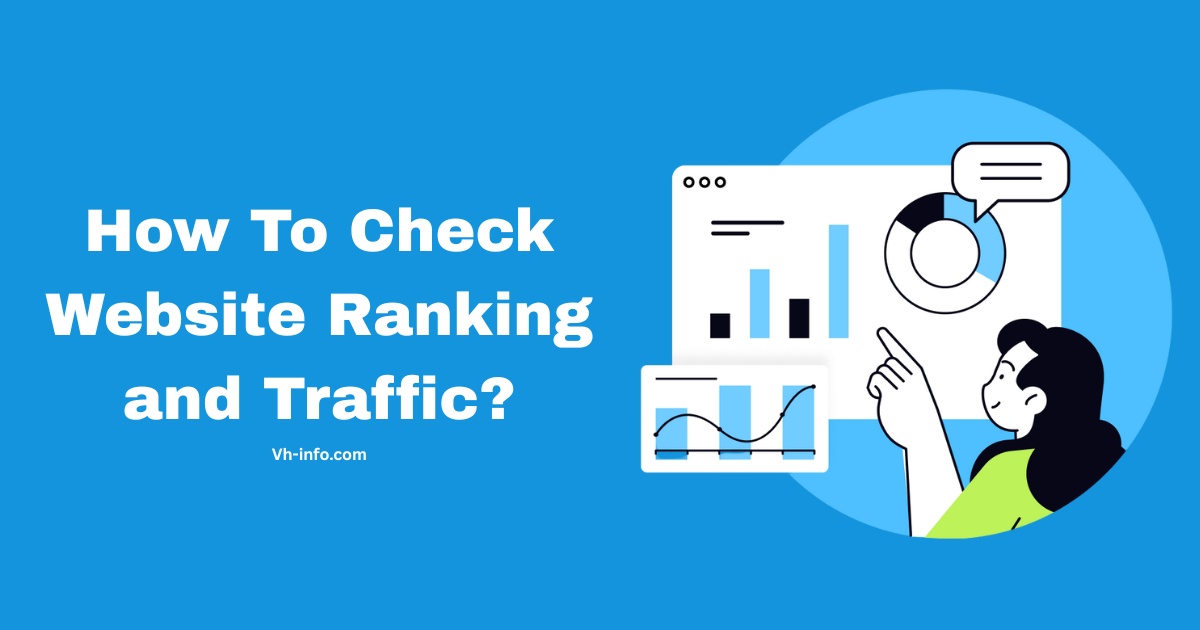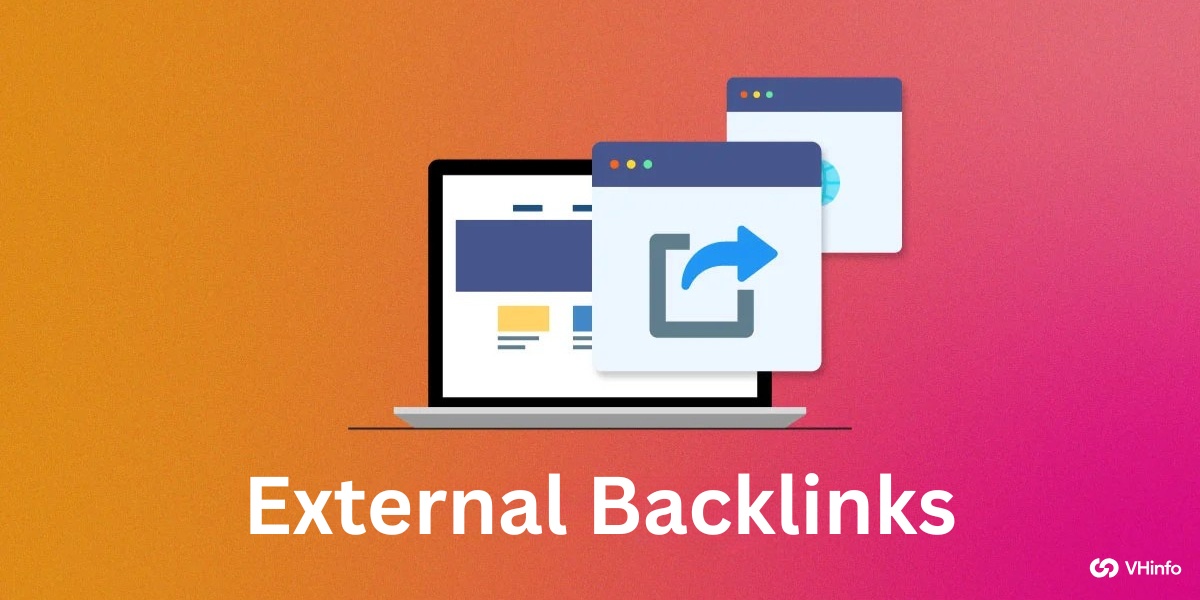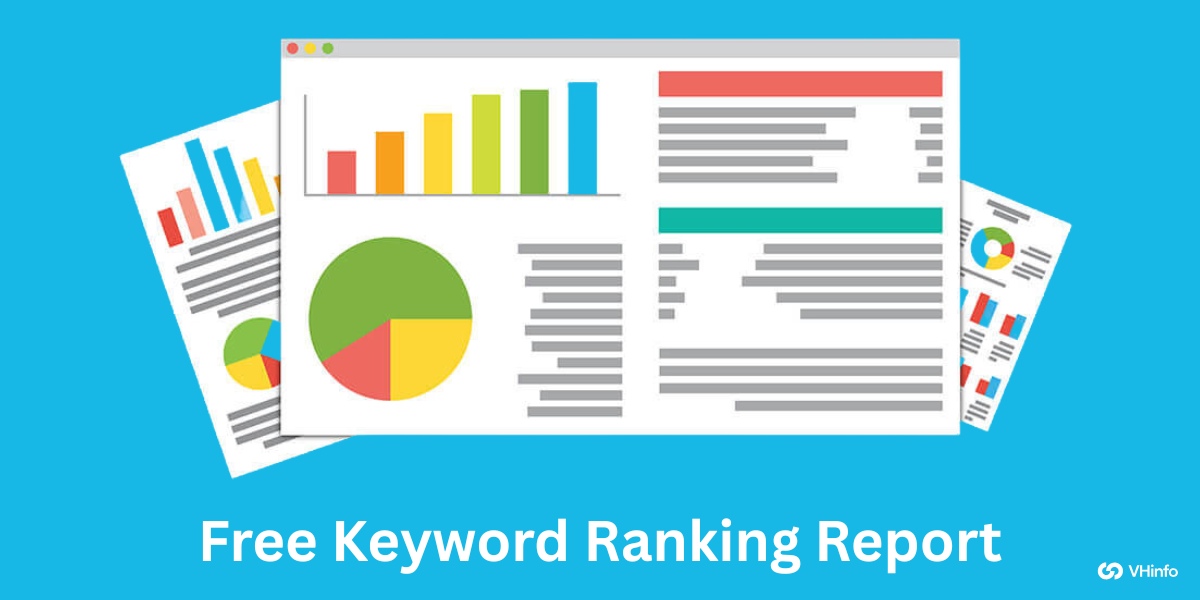A website’s ranking and traffic are the backbone of online success, especially for SaaS companies aiming to reach their target audience and drive growth.
Website ranking shows where your web pages appear in Google search results for important keywords, while website traffic reveals how many potential customers are visiting your site. These SEO metrics are not just numbers-they reflect your site’s visibility, authority, and ability to attract qualified leads through organic traffic.
Monitoring your keyword rankings and analyzing traffic data helps you understand what’s working in your digital marketing strategy and where to improve.
At VH-info, we specialize in helping SaaS brands boost their search engine rankings, increase website visitors, and grow their business with proven link-building and SEO strategies.
In this guide, we’ll break down easy, actionable ways to check your website ranking and traffic, use the best website traffic checker and rank checker tools, and turn those insights into real results for your SaaS brand.
Understanding Website Ranking and Traffic
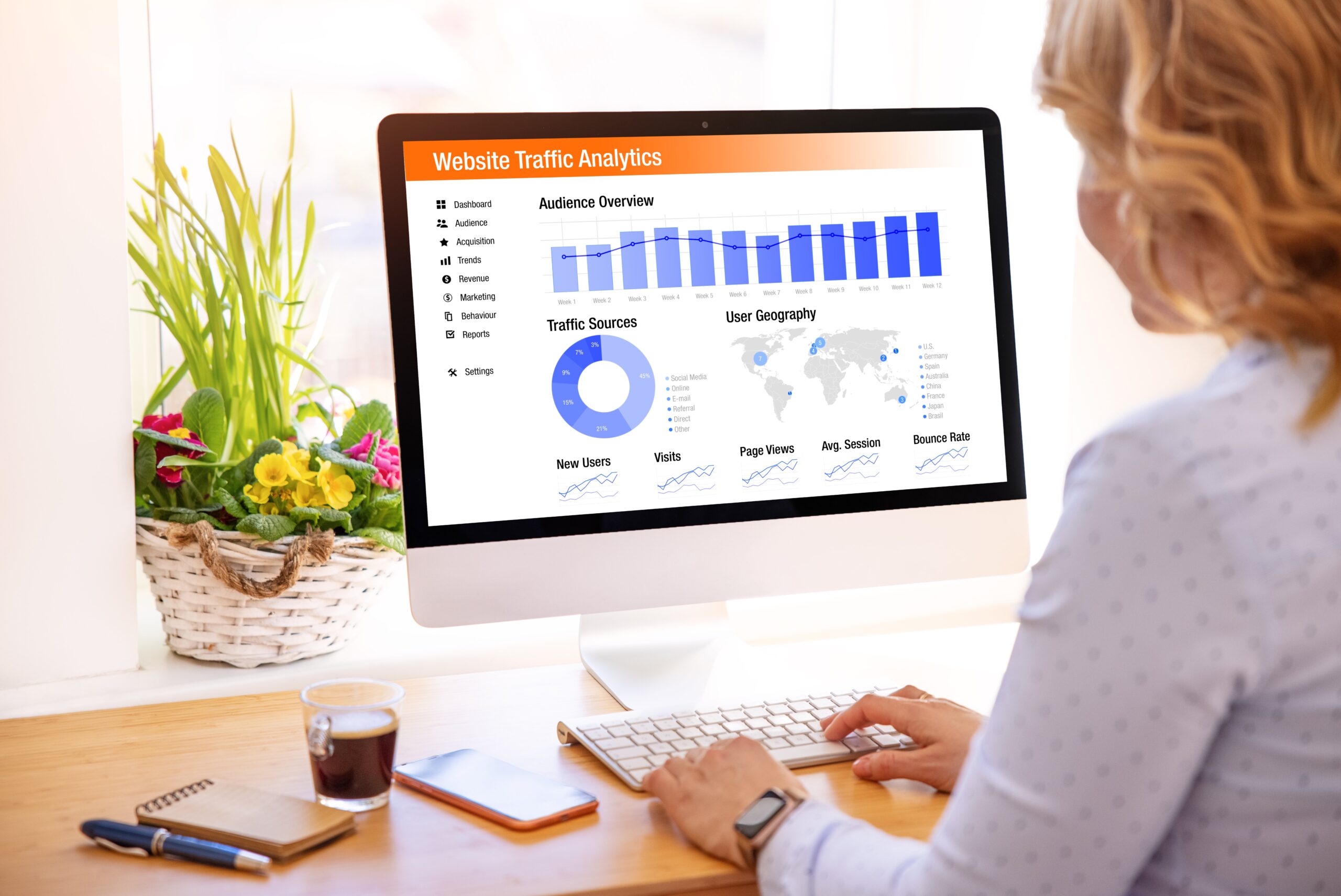
What is Website Ranking?
Website ranking refers to your site’s position in search engine results pages (SERPs) for specific keywords. When someone searches for a term relevant to your business, your ranking determines where your web pages appear in the results.
Higher rankings lead to greater visibility, which typically results in more clicks and traffic to your website.
Search engines like Google use complex algorithms that consider over 200 different factors to determine rankings, including content quality, backlinks, user experience, and technical SEO elements.
What is Website Traffic?
Website traffic measures how many users visit your website within a specific timeframe.
According to Seobility, traffic is divided between regular visitors (loyal customers providing steady traffic) and one-time visitors who find your site through search engine queries.
Traffic data includes the number of sessions, page views, bounce rates, and user behavior metrics.
Your website traffic directly correlates with your online visibility and often with your business success.
Why is Monitoring Ranking and Traffic Important?
Monitoring your website ranking and traffic is essential for several reasons:
- It helps measure the effectiveness of your SEO and digital marketing strategy
- It provides insights into user behavior and preferences
- It allows you to identify opportunities for growth and optimization
- It helps you spot and address issues before they impact your business
- It enables you to track your performance against competitors
Research shows that top-performing pages need regular attention to maintain their positions. Even leading pages can only maintain top positions for 2-3 years when consistently updated every 6-8 months.
Without regular monitoring, you might miss critical opportunities to update your content before it starts losing ground to competitors.
How To Check Website Ranking and Traffic?
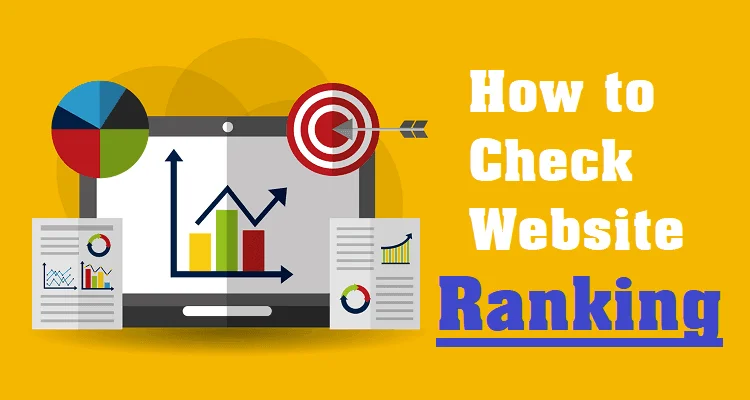
Checking your website’s ranking and traffic is simple when you know the right tools and methods.
Here’s a straightforward approach that anyone can follow:
Best Tools To Check Website Ranking

Many tools help make ranking analysis easier. They offer features designed for SEO needs.
Free Ranking Checker Tools
Several free tools can help you monitor your keyword rankings:
- Seobility’s Ranking Checker: This free Google rank checker allows you to check your exact keyword positions without registration. Simply enter your target keyword and domain name to see where your site ranks in the top 100 search results.
- Ahrefs Free Keyword Rank Checker: This tool lets you instantly see where you rank for any keyword across hundreds of locations. No registration is required, making it accessible for quick ranking checks.
- Free Google Rank Checker Tool: These tools provide real-time data about your website’s position in Google search results for specific keywords, helping you track your SEO progress without investing in premium tools.
Premium Ranking Analysis Tools
For more comprehensive ranking analysis, consider these premium options:
- SEMrush: Offers detailed keyword tracking across multiple search engines and locations, along with competitor analysis and historical data.
- Ahrefs: Provides ranking data for up to 10,000 keywords, with features to track ranking progress over time and compare your site against up to five competitors.
- SE Ranking: Offers rank tracking with daily updates and detailed reports on your SEO performance.
Google Search Console For Ranking Data
Google Search Console is a free tool provided by Google that offers valuable insights into your website’s performance in Google search results:
- It shows your average position for different queries
- It displays your click-through rates (CTR) for various keywords
- It highlights which pages rank for which queries
- It reveals how your rankings change over time
- It provides data on impressions and clicks from search results
Google Search Console should be your starting point for ranking analysis as it provides data directly from Google itself.
Top Website Traffic Checkers
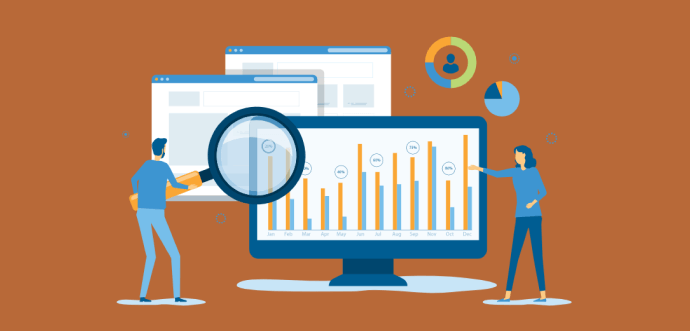
SimilarWeb Traffic Analyzer

SimilarWeb is a popular website traffic checker that allows you to analyze any website’s traffic statistics:
- It shows estimated monthly visits and unique visitors
- It breaks down traffic sources (direct, referral, search, social, etc.)
- It provides geographical data on website visitors
- It offers insights into engagement metrics like pages per visit and average visit duration
- It allows comparison of up to 5 competitors’ traffic data
SEMrush Traffic Analytics

SEMrush Traffic Analytics offers valuable insights into website traffic sources, user behavior, and overall performance:
- It provides detailed traffic source breakdowns
- It shows user engagement metrics
- It offers a geographic distribution of traffic
- It allows for competitor comparisons
- It integrates with other SEMrush SEO tools for comprehensive analysis
Ahrefs Traffic Checker
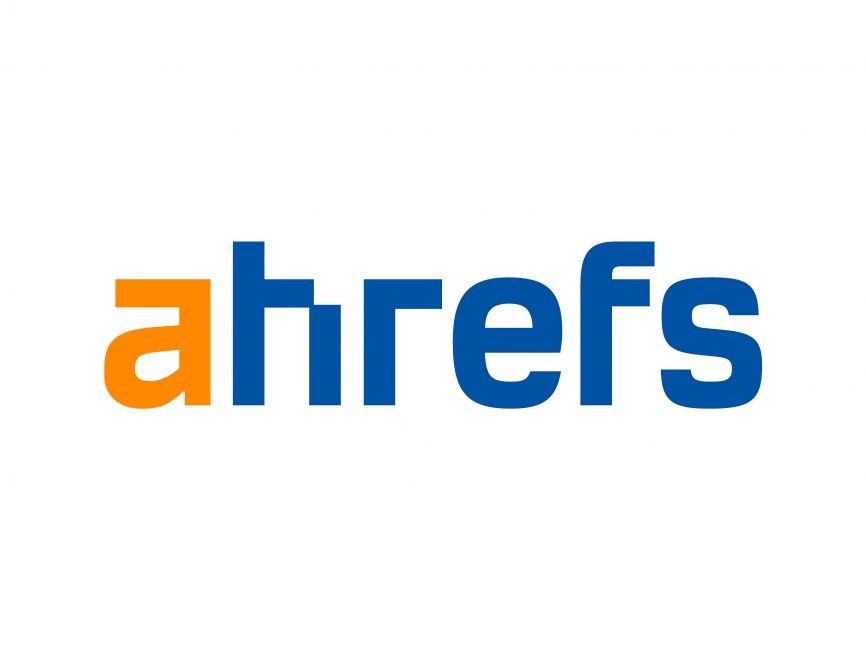
Ahrefs offers powerful traffic analysis capabilities:
- It estimates organic traffic based on ranking positions and search volume
- It shows which keywords drive the most traffic to a site
- It provides historical traffic data to identify trends
- It allows for competitive traffic analysis
- It integrates traffic data with backlink analysis
SE Ranking’s Website Traffic Checker
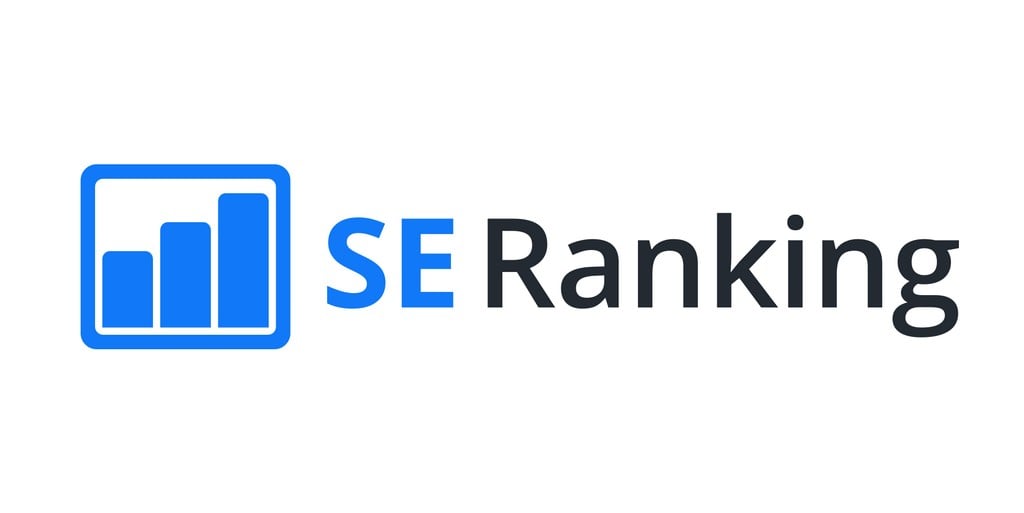
SE Ranking provides traffic analysis tools that help you:
- Estimate a website’s traffic volume
- Identify top-performing pages
- Analyze traffic sources
- Monitor traffic changes over time
- Compare traffic against competitors
Google Analytics For Your Own Website
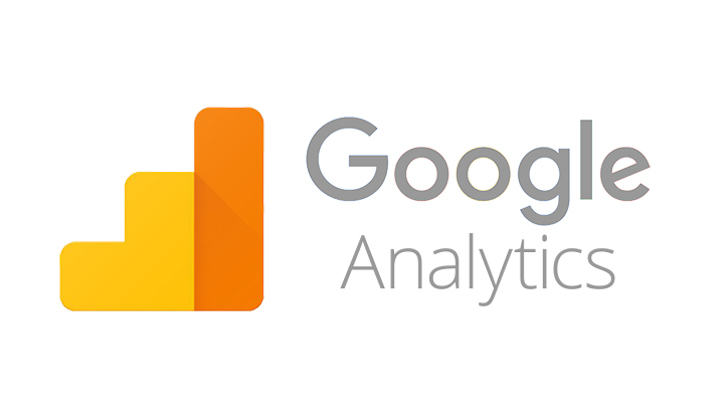
Google Analytics remains the most accurate tool for analyzing your own website traffic:
- It provides precise data on your actual traffic, not estimates
- It breaks down traffic by source/medium (organic, direct, referral, social, email, etc.)
- It offers demographic data about your website visitors
- It shows user behavior metrics like bounce rate and session duration
- It tracks conversions and goal completions
How to Analyze Competitor Website Traffic?

Identifying Your Main Competitors
Before analyzing competitor traffic, you need to identify who your main competitors are:
- Use keyword research tools to find sites ranking for your target keywords
- Look for businesses offering similar products or services in your industry
- Use tools like SEMrush or Ahrefs to identify your organic competitors
- Consider both direct business competitors and content competitors
- Focus on competitors with similar target audience profiles
Analyzing Competitor Traffic Sources
Understanding where your competitors get their traffic provides valuable insights:
- Use traffic checker tools to identify their main traffic sources
- Analyze the ratio of organic vs. paid traffic
- Check which referral sites send them traffic
- Examine their social media traffic to identify effective platforms
- Look for patterns in their traffic acquisition strategies
According to SimilarWeb, you can “analyze domains’ link equity to sharpen your own linking & referral traffic strategy“.
Discovering Competitor Keywords
Finding which keywords drive traffic to your competitors helps identify opportunities:
- Use Ahrefs or SEMrush to see which keywords your competitors rank for
- Identify their top-performing keywords by traffic
- Look for keyword gaps-terms they rank for but you don’t
- Analyze their top-ranking pages to understand content strategies
- Pay attention to the search volume and CPC of their keywords
Interpreting Website Traffic Data
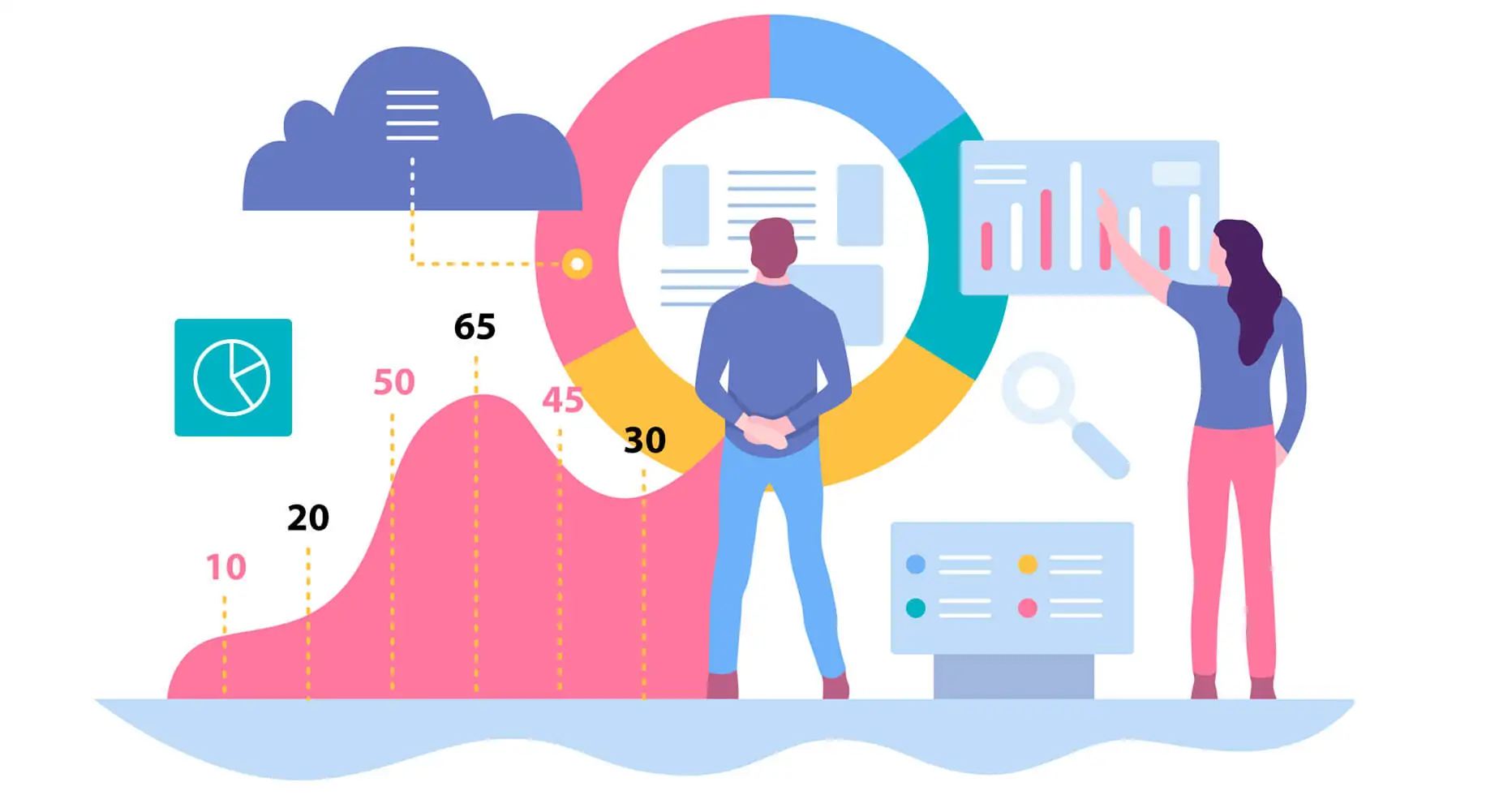
Understanding Traffic Metrics
To make sense of traffic data, focus on these key metrics:
- Sessions and unique visitors
- Pages per session
- Average session duration
- Bounce rate
- Conversion rate
Each metric provides different insights into user engagement and website effectiveness.
Traffic Source Analysis
Traffic source analysis helps you understand how users find your website:
- Organic traffic: Visitors from search engines
- Direct traffic: Users typing your URL directly
- Referral traffic: Visitors from links on other websites
- Social traffic: Users coming from social media platforms
- Paid traffic: Visitors from advertisements and paid campaigns
Geographical Distribution of Traffic
Geographic data reveals where your visitors are located:
- Country-level data helps with international targeting
- Regional data assists with local SEO efforts
- City-level information enables hyperlocal marketing
- Time zone patterns inform publishing schedules
- Language preferences guide content localization
Device Distribution
Device data shows which devices your visitors use:
- Desktop vs. mobile usage
- Specific mobile devices (iOS, Android)
- Tablet traffic percentages
- Browser preferences
- Screen resolution statistics
According to recent data, mobile devices account for over 60% of global web traffic, making mobile performance analysis particularly important.
Strategies To Improve Website Ranking and Traffic
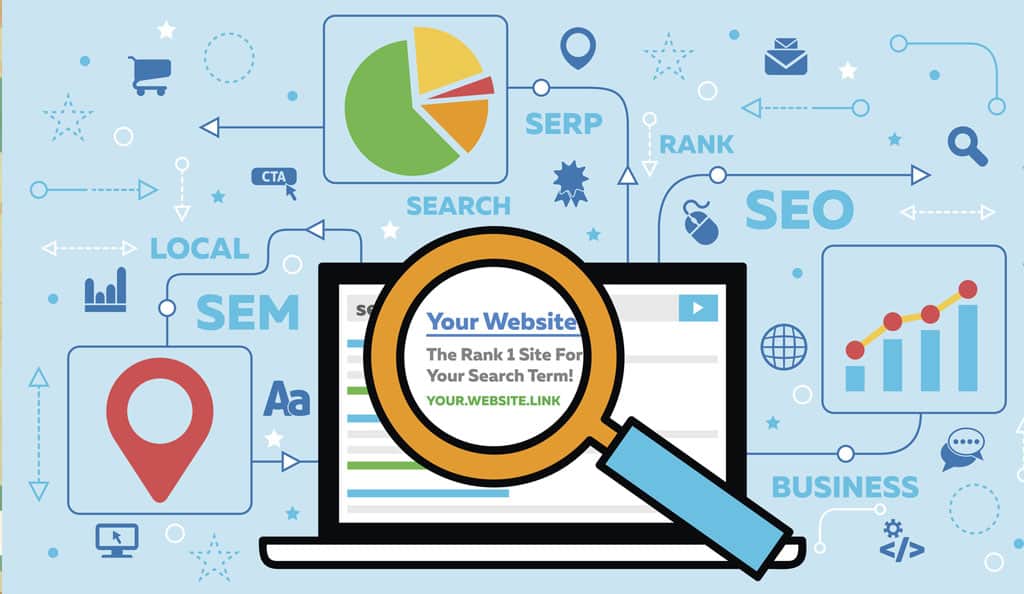
SEO Optimization Techniques
Improving your website’s ranking starts with solid SEO optimization techniques.
Focus on optimizing your content for target keywords that your potential customers are searching for on Google. Make sure your web pages load quickly, as slow sites can hurt your rankings and drive away website visitors.
Mobile-friendliness is a must since most users browse on their phones, and search engines like Google prioritize mobile-ready sites. Building quality backlinks from reputable websites boosts your authority and helps your site rank higher in search results.
Don’t forget to fix technical SEO issues, such as broken links or incorrect URL structures, which can impact your visibility and search engine optimization efforts.
At VH-info, we support SaaS brands by creating quality content, securing guest posts on authoritative blogs, and repairing broken links to strengthen your SEO metrics and overall digital marketing strategy.
Content Marketing Strategies
Content marketing is a powerful way to increase website traffic and improve your keyword rankings. Start by creating comprehensive, in-depth content that answers your target audience’s questions and addresses their needs.
Regularly update your existing content to keep it relevant and maintain your search engine rankings. Focus on developing articles and resources that target high-value keywords with strong search volume, which can bring in much traffic and potential customers.
Use clear headings, bullet points, and proper formatting to make your content easy to read and understand. Including multimedia elements like images, graphs, and videos can boost engagement and help your pages stand out in the search results.
Social Media Traffic Generation
Social media is a great way to send more visitors to your website and expand your reach beyond search engines. Share your quality content consistently across platforms like Facebook, LinkedIn, and Twitter to increase brand visibility and attract website visitors.
Engage with your audience by responding to comments, running polls, or hosting live sessions to build a loyal community. Take advantage of platform-specific features, such as stories and reels, to capture attention.
Make it easy for users to share your content by adding social sharing buttons to your web pages. Use analytics tools to track which social channels drive the most traffic, then focus on the platforms that work best for your business.
Paid Traffic Methods
Paid traffic methods can quickly boost your website traffic and reach new audiences.
Google Ads allows you to appear at the top of search results for your chosen keywords, driving targeted traffic to your site. Social media advertisements on platforms like Facebook, Instagram, and LinkedIn help you reach specific demographics and increase brand awareness.
Remarketing campaigns are effective for re-engaging visitors who have already shown interest in your site but haven’t converted yet.
Native advertising places your content on relevant websites, blending in with organic content for better engagement. Sponsored content and collaborations with influencers or industry blogs can also attract quality traffic and potential customers to your site.
Tracking, Ranking, and Traffic Changes Over Time
![]()
Setting Up Regular Monitoring
To keep your website ranking and traffic on track, set up a regular monitoring system. Schedule weekly checks for your primary keyword rankings using a reliable rank checker or SEO ranking checker tool.
Generate monthly reports that provide a comprehensive overview of your website traffic, keyword performance, and search engine visibility. Monitor your traffic data weekly to catch any sudden drops or spikes early.
Every quarter, conduct a deep analysis to spot long-term trends and evaluate your digital marketing strategy. Set up alerts for significant ranking drops so you can respond quickly and minimize any negative impact on your site’s ranks and traffic sources.
Identifying Trends and Patterns
Analyzing your traffic data and keyword rankings over time helps you spot important trends and patterns.
Look for seasonal fluctuations, such as higher website visitors during certain months or holidays, and adjust your marketing strategy accordingly. Pay attention to day-of-week patterns to identify the best times to publish new content or run advertisements.
Track long-term ranking trends to see if your SEO efforts are paying off. Compare content publishing dates with traffic spikes to understand what type of content drives the most organic traffic.
Measure the impact of marketing campaigns to see which channels and strategies deliver the best results for your business.
Responding To Algorithm Updates
Search engines like Google regularly update their algorithms, which can affect your website rankings and traffic data. Stay informed by monitoring industry news and updates from search engines.
When you notice ranking changes, analyze which pages or keywords were impacted and look for common factors. Adjust your SEO strategy to align with new ranking signals, such as changes in search volume or user intent. A Digital Marketing Course can help you understand these dynamics and optimize your strategies effectively.
Focus on long-term quality by consistently producing valuable, relevant content and building strong backlinks, rather than chasing quick fixes. This approach helps protect your site from future algorithm changes and keeps your website ranking strong in the search results.
FAQ’s:
How Accurate Are Website Traffic Checkers?
Website traffic checkers provide estimates based on sampling and modeling. For third-party websites, accuracy typically ranges from 60-80%, depending on the tool and website size. Tools like SimilarWeb and SEMrush offer reasonably accurate estimates, but exact numbers will differ from actual analytics. For your website, Google Analytics provides the most accurate traffic data.
Can I Check Any Website’s Traffic For Free?
Yes, you can check basic traffic estimates for any website using free tools like SimilarWeb (limited queries), Ahrefs’ free Website Checker, or SEMrush’s limited free access. However, free tools typically provide less detailed data and may have usage restrictions.
For comprehensive traffic analysis, premium tools offer more accurate and detailed information.
What’s The Difference Between Organic and Paid Traffic?
Organic traffic comes from unpaid search results when users click on your website in the natural search listings. This traffic is driven by SEO efforts and quality content. Paid traffic comes from advertisements, including pay-per-click (PPC) campaigns, display ads, and sponsored content. Organic traffic tends to have better long-term ROI, while paid traffic can deliver immediate results.
How Often Should I Check My Website Ranking?
For most businesses, checking website rankings weekly is sufficient to identify trends without becoming obsessive.
However, after making significant website changes or during algorithm updates, daily monitoring may be beneficial. Set up automated rank tracking for your key terms and review comprehensive reports weekly or monthly.
Can Website Traffic Data Improve SEO?
Yes, website traffic data is valuable for SEO improvement. It helps identify which keywords drive traffic, which pages perform well, and where users exit your site.
Through studying & Analyzing traffic patterns, you can optimize content, fix underperforming pages, and focus on keywords that bring qualified visitors. Traffic metrics like bounce rate and time on page also inform content quality improvements.
Why Does My Traffic Data Differ Between Tools?
Traffic data varies between tools due to different methodologies, data sources, and sampling techniques. Each tool has its algorithms for estimating traffic.
Google Analytics tracks actual visitors to your site but may miss some due to blocked cookies or JavaScript. Third-party tools estimate traffic based on various data sources and statistical models, leading to different figures across platforms.
How Do I Improve My Website’s Ranking On Google?
To improve your website’s ranking on Google:
- Create high-quality, relevant content that addresses user needs
- Optimize your on-page SEO (titles, descriptions, headings, URLs)
- Build a strong backlink profile from reputable sites
- Enhance technical SEO (site speed, mobile-friendliness, indexability)
- Focus on user experience metrics (engagement, bounce rate, dwell time)
At VH-info, we offer comprehensive SaaS link-building services that help improve your search engine rankings through quality backlinks and content optimization.
Conclusion
Monitoring your website ranking and traffic is not just about collecting data-it’s about gaining actionable insights that drive growth. The tools and strategies outlined in this guide provide a framework for effective tracking and analysis of your website’s performance in search results.
Remember that ranking and traffic metrics should inform your broader digital marketing strategy. Regular monitoring allows you to identify opportunities, address issues quickly, and measure the impact of your marketing efforts.
For SaaS companies looking to improve their website ranking and traffic, VH-info offers specialized link building services designed to enhance your online presence and improve your website’s authority.
Our approach focuses on building relationships, improving domain rating, increasing brand awareness, generating referral traffic from your target audience, and earning relevant backlinks.
